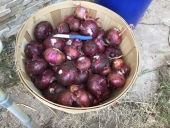
 1
1




Living in Anjou , France,
For the many not for the few
http://www.permies.com/t/80/31583/projects/Permie-Pennies-France#330873









Works at a residential alternative high school in the Himalayas SECMOL.org . "Back home" is Cape Cod, E Coast USA.




... it´s about time to get a signature ...




Gilbert Fritz wrote:
Can you scrap back the mulch and plant them in a row of soil at the bottom of the trench, then push the mulch back together?
"People may doubt what you say, but they will believe what you do."








 particularly carrots I get nothing
particularly carrots I get nothing Living in Anjou , France,
For the many not for the few
http://www.permies.com/t/80/31583/projects/Permie-Pennies-France#330873




Living in Anjou , France,
For the many not for the few
http://www.permies.com/t/80/31583/projects/Permie-Pennies-France#330873












Living in Anjou , France,
For the many not for the few
http://www.permies.com/t/80/31583/projects/Permie-Pennies-France#330873

|
I think he's gonna try to grab my monkey. Do we have a monkey outfit for this tiny ad?
Homestead Pigs Course
https://permies.com/wiki/365748/Homestead-Pigs
|


